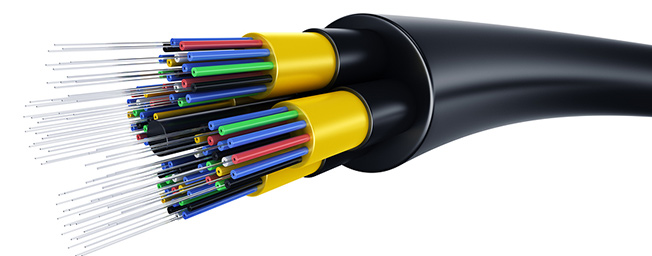
Whether you’re looking to upgrade your home or office’s networking infrastructure or just for better Internet performance, installing fiber optic cables can provide a fast, reliable solution to your network problems. But there are some things to consider before installing fiber optic cable.
Precautions to take
Proper knowledge of precautions when installing fiber optic cable can reduce risks and ensure workplace safety. Many hazards can be associated with installing fiber optic cables, including induced voltages, explosive gases, splinters, and glass shards.
To ensure the safety of your workers, you should develop a written plan for installing your fiber optic cable. It should include a line specification, equipment location, testing requirements, and personnel experience. It would help if you also had a plan for testing the cable once it is installed.
Always wear protective gloves when working with fiber optic cable. Never bend the line too sharply. Also, avoid twisting or pressing the cable against building structures.
Lightweight
Optical fiber cable has been around for quite some time, but the latest innovations in fiber optic cable installation can improve reliability, lower cost, and reduce installation time. For example, Fiber optic cable installation is far less susceptible to damage than copper cables. Fiber optic cable is also lighter in weight, which is a boon in many situations. It is also easier to install and can accommodate new equipment.
Easy to install
Whether installing cable on-premises or in an underground location, there are a few steps to take for easy fiber optic cable installation. A proper plan will help eliminate many of the pitfalls of fiber optics.
A detailed plan should include equipment and schedule requirements. This provides information on correct cables, connectors, and proper testing methods. It also has safety rules and procedures for the personnel involved.
Safety is one of the most important aspects of any installation project. Every person involved in the project should be adequately trained. In addition, OSHA rules should store all materials, and all workers should wear standard construction safety gear.
The most important thing to remember when installing fiber optic cable is that it is a high-performance technology. Therefore, it is best to rely on trained installers with experience installing this cable. This reduces the risk of critical mistakes.
Faster transmission than copper wires
Optical fiber cables are fragile and have a smaller diameter than copper cables. These lines are commonly used in computer networks and electricity distribution systems. They are also used in surveillance cameras.
One of the most significant advantages of fiber optics over copper cables is their lower loss of signal strength. This means that the signal is less susceptible to interference.
Another significant advantage of fiber optics is its greater bandwidth. Fiber optics can transmit signals at speeds of hundreds of terabits per second. This is more than twice as fast as copper. This is because fiber can share data in light pulses instead of electrical pulses. This is much better than copper because light travels farther than an electrical pulse.
Higher cost than copper wires
Compared to copper cables, fiber optic cabling is more expensive to install. Moreover, the installation cost is higher because it requires more technical expertise and specialist equipment. But the result is a more reliable data transmission system. As a result, fiber optics are ideal for networks that require high bandwidth connections.
Fiber optics is more resistant to electromagnetic interference. Electromagnetic interference can corrupt data packets. It can also lead to reduced data transmission speed. The distance a network carries the data also affects the data transmission rate.
The weight of the electrical conductors is also an essential factor. Copper is heavier than fiber. Fiber has a thinner structure, allowing for better handling. Fiber cables are also more resistant to corrosion and corrosive chemicals.
The diameter of the conductors also plays a role in data transmission speed. Unfortunately, copper cables are also subject to interference from other sources. This is a problem because it can bleed into the following line.





